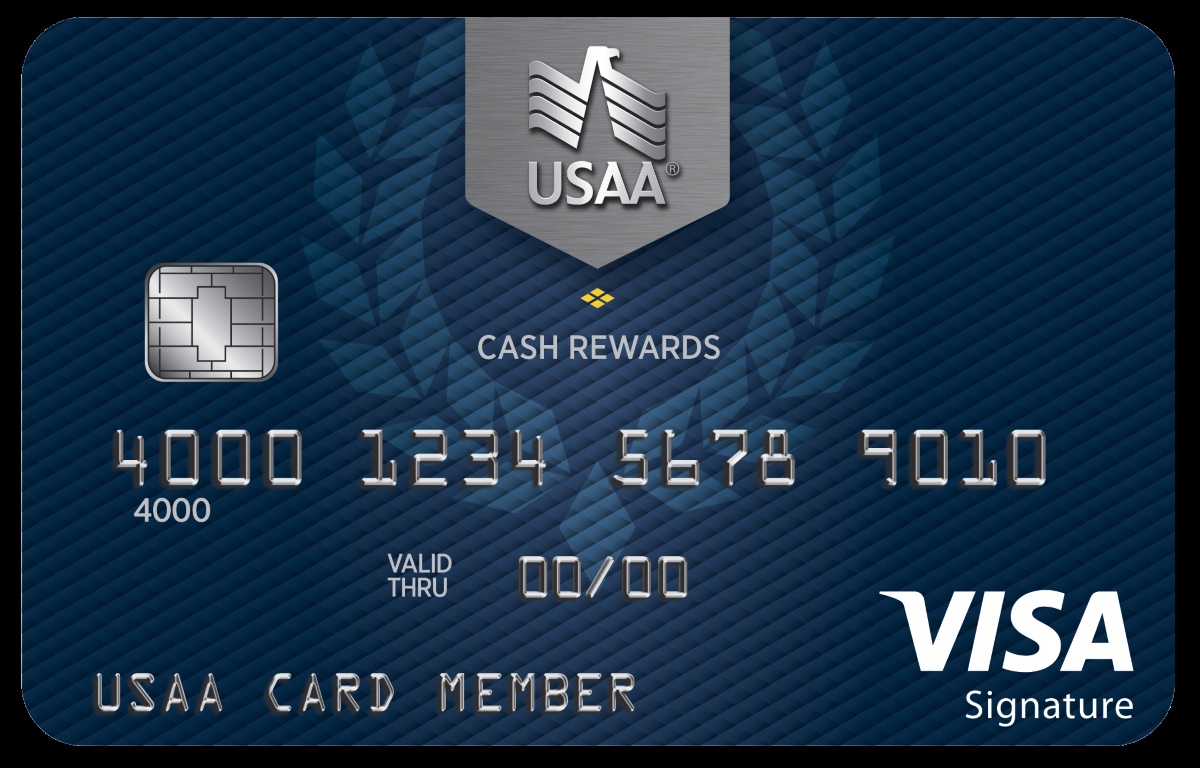Home>Finance>What Steps To Take After Getting A Shared Secured Card?


Finance
What Steps To Take After Getting A Shared Secured Card?
Published: March 2, 2024
Learn the essential steps to take after obtaining a shared secured card to improve your finances and build credit. Discover effective strategies and tips for maximizing the benefits of your new financial tool.
(Many of the links in this article redirect to a specific reviewed product. Your purchase of these products through affiliate links helps to generate commission for LiveWell, at no extra cost. Learn more)
Table of Contents
Introduction
Securing a shared secured card is a significant step toward building or rebuilding your credit history. It's an opportunity to demonstrate responsible financial behavior and establish a positive credit profile. However, the journey doesn't end once you receive the card. In fact, it's just the beginning of a process that requires diligence, discipline, and strategic planning. This article will guide you through the essential steps to take after acquiring a shared secured card, empowering you to make the most of this financial tool and pave the way for a healthier credit future.
After obtaining a shared secured card, it's crucial to understand the responsibilities and opportunities it presents. By managing the card effectively, you can lay a sturdy foundation for your financial well-being and set the stage for future credit endeavors. Let's delve into the key actions to consider after acquiring a shared secured card, from making timely payments to advancing to an unsecured card and building a robust credit history. This comprehensive guide will equip you with the knowledge and insights needed to navigate the post-acquisition phase of a shared secured card effectively.
Understanding a Shared Secured Card
Before delving into the post-acquisition steps, it’s essential to grasp the fundamentals of a shared secured card. This type of credit card is typically designed for individuals with limited or damaged credit histories. It requires a security deposit, which serves as collateral and determines the card’s credit limit. The “shared” aspect implies that a responsible party, such as a family member or friend, co-signs or shares the account with the cardholder, providing additional assurance to the card issuer.
Shared secured cards function similarly to traditional credit cards, allowing users to make purchases, build credit, and establish responsible payment habits. The security deposit mitigates the risk for the card issuer, making it an accessible option for individuals who may not qualify for unsecured credit cards due to past financial challenges or a lack of credit history.
By comprehending the nature of a shared secured card, cardholders can appreciate the significance of their financial decisions and the impact on their credit standing. It’s crucial to recognize that the primary cardholder is ultimately responsible for managing the card and adhering to the agreed-upon terms, as this will shape their credit trajectory. With this understanding in place, individuals can proceed with confidence, knowing that their actions with the shared secured card directly influence their credit journey.
Making Timely Payments
One of the most critical steps after obtaining a shared secured card is consistently making on-time payments. Timely payments are the cornerstone of a healthy credit history and directly influence credit scores. By paying at least the minimum amount due by the due date each month, cardholders demonstrate reliability and responsibility to creditors and credit bureaus.
Missing payments or making late payments can have detrimental effects on credit scores and overall creditworthiness. It can lead to penalty fees, increased interest rates, and a negative impact on the shared secured cardholder’s credit report. Therefore, prioritizing punctual payments is essential for maintaining a positive credit standing and maximizing the benefits of the shared secured card.
Setting up automatic payments or calendar reminders can help ensure that payments are made on time. By staying organized and proactive, cardholders can avoid the pitfalls of missed payments and cultivate a reputation as dependable borrowers. Additionally, making more than the minimum payment, if possible, can expedite the reduction of the card’s balance and demonstrate proactive debt management, further bolstering the individual’s credit profile.
By consistently making timely payments, shared secured cardholders lay the groundwork for a robust credit history, positioning themselves for future credit opportunities and improved financial stability. This fundamental practice not only benefits the present credit standing but also sets a positive precedent for long-term credit management.
Monitoring Your Credit Score
After acquiring a shared secured card, it’s essential to actively monitor your credit score and overall credit report. Your credit score is a numerical representation of your creditworthiness, and it plays a pivotal role in various financial transactions, including loan approvals, interest rates, and even rental applications. By regularly checking your credit score, you can stay informed about your credit health and track the impact of your shared secured card activity.
Several online platforms offer free credit score monitoring, enabling you to keep a close eye on any fluctuations or changes in your score. Understanding the factors that influence your credit score, such as payment history, credit utilization, and length of credit history, empowers you to make informed decisions regarding your financial behavior. Additionally, monitoring your credit report allows you to identify any errors or inaccuracies that may require attention, ensuring that your credit profile is an accurate reflection of your financial habits.
As you navigate the realm of credit building with a shared secured card, witnessing positive changes in your credit score can be encouraging and affirming. It signifies that your efforts in managing the card responsibly are yielding favorable results and propelling you toward a stronger credit standing. Conversely, if you encounter setbacks or declines in your credit score, it serves as a prompt to reassess your financial practices and make adjustments to safeguard your creditworthiness.
By actively monitoring your credit score and report, you demonstrate a proactive approach to credit management and position yourself to address any issues or discrepancies promptly. This vigilance not only fosters a deeper understanding of your credit standing but also contributes to a more secure and informed financial future.
Graduating to an Unsecured Card
For individuals with a shared secured card, the ultimate goal often involves transitioning to an unsecured credit card. This progression signifies a significant milestone in credit building and reflects the cardholder’s enhanced creditworthiness and financial stability. Many shared secured card issuers offer pathways for cardholders to upgrade to an unsecured card after demonstrating responsible card management and credit behavior over time.
Graduating to an unsecured card typically entails a review of the cardholder’s payment history, credit utilization, and overall credit standing. Consistently making on-time payments, maintaining a low credit utilization ratio, and exhibiting prudent financial habits can position shared secured cardholders favorably for this advancement. As they prove their creditworthiness and responsibility, they become eligible for an unsecured credit card, which often comes with higher credit limits and additional perks.
Transitioning to an unsecured card signifies a significant vote of confidence from the card issuer, signifying that the cardholder has demonstrated the capacity to manage credit responsibly and is now eligible for a more traditional credit arrangement. This shift also frees up the initial security deposit, which can be a welcome financial release for the cardholder. It’s a testament to the progress made in building a positive credit history and a stepping stone toward accessing a broader range of financial products and services.
As shared secured cardholders aspire to graduate to an unsecured card, maintaining consistent and responsible credit management practices becomes paramount. By continuing to make timely payments, keeping credit utilization in check, and exhibiting prudent financial behavior, individuals can position themselves for a successful transition to an unsecured credit card, marking a significant achievement in their credit journey.
Building a Strong Credit History
Acquiring a shared secured card presents a valuable opportunity to establish and fortify a positive credit history. As cardholders navigate this financial tool, they actively contribute to the development of their credit profile, shaping their creditworthiness and future financial prospects. Building a robust credit history involves a multifaceted approach that encompasses responsible credit utilization, prudent payment management, and strategic credit-building initiatives.
One of the fundamental elements of cultivating a strong credit history with a shared secured card is maintaining a low credit utilization ratio. Keeping the card’s balance well below the credit limit demonstrates disciplined credit usage and responsible debt management. This practice signals to creditors and credit bureaus that the cardholder is judicious in their spending and can effectively handle credit resources.
Consistent and timely payments play a pivotal role in fortifying a positive credit history. By meeting payment obligations promptly and in full, shared secured cardholders showcase their reliability and commitment to sound financial practices. This, in turn, contributes to the gradual enhancement of their credit profile, instilling confidence in potential lenders and financial institutions.
Moreover, actively seeking opportunities to diversify credit can further enrich and strengthen a shared secured cardholder’s credit history. Exploring additional credit products, such as small installment loans or retail credit accounts, can add depth to the individual’s credit portfolio, demonstrating their ability to manage various types of credit responsibly.
Engaging in these credit-building endeavors with the shared secured card sets the stage for a more robust and comprehensive credit history. Over time, these efforts culminate in an established credit profile that reflects responsible financial management, paving the way for expanded credit options and favorable terms in the future.
Conclusion
Acquiring a shared secured card marks the beginning of a transformative journey toward financial empowerment and credit enhancement. By understanding the nuances of this credit tool and taking strategic post-acquisition steps, individuals can leverage the shared secured card to lay a sturdy foundation for their credit future.
From comprehending the dynamics of a shared secured card to making timely payments and monitoring credit scores, each action contributes to the overarching goal of building a positive credit history. As shared secured cardholders navigate these essential steps, they position themselves for potential advancement to an unsecured card, signifying a significant milestone in their credit journey.
Ultimately, the shared secured card serves as a catalyst for individuals to shape their credit standing, instill responsible financial habits, and pave the way for broader financial opportunities. By approaching this credit-building process with diligence and intentionality, shared secured cardholders can chart a trajectory toward a stronger credit profile and enhanced financial well-being.
Embracing the responsibilities and opportunities presented by a shared secured card empowers individuals to not only address immediate credit needs but also cultivate a lasting and positive impact on their financial lives. With prudent management and a proactive approach, shared secured cardholders can harness the potential of this financial tool to propel them toward a more secure and prosperous credit future.














